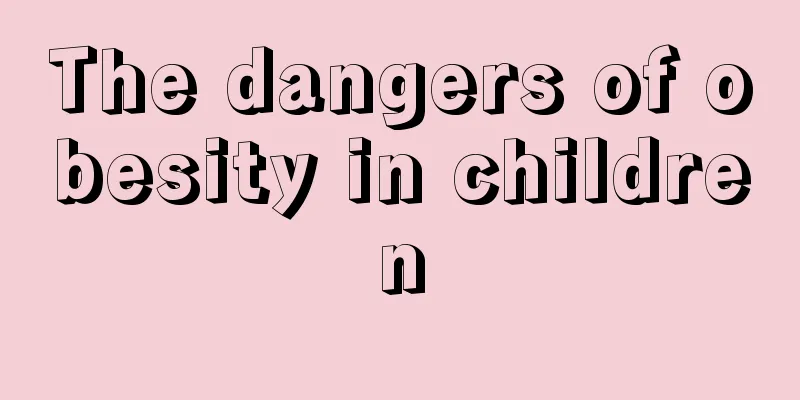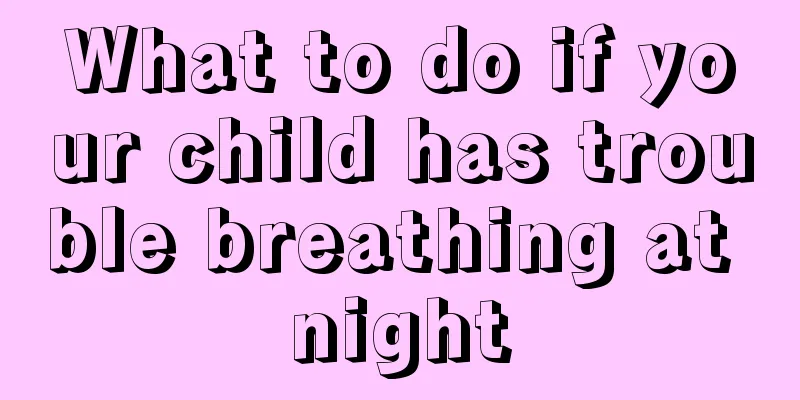What should I do if my child has rhinitis?

|
When a child is affected by rhinitis, it is also necessary to pay attention to treatment based on the cause of the primary disease, because different rhinitis medications are different. The use of nasal drops can effectively relieve the symptoms of rhinitis. Also pay attention to preventing children from having colds and nasal congestion. 1. Mainly treat the primary cause of rhinitis. Different medications are used for different types of rhinitis. Allergic rhinitis requires anti-allergic treatment, such as astemizole, chlorpheniramine, etc. 2. Nasal drops are generally used to relieve the symptoms of rhinitis. Nasal oil can relieve the dryness of dry rhinitis, furosemide can relieve nasal congestion, and hormone nasal drops can help relieve symptoms of allergic rhinitis such as sneezing and runny nose. 3. Colds are usually accompanied by sore throat, cough, etc. In severe cases, there may also be fever, headache, body aches and even nausea and diarrhea. The typical symptoms of rhinitis are paroxysmal sneezing, runny nose, itchy nose and nasal congestion. Parents should pay attention to their children’s symptoms; 4. Try washing your child with salt water, use normal saline. Nasal irrigation with saline must be done in two steps. You must first rinse the nasal vestibule separately, and then rinse the deep nasal cavity after rinsing the nasal vestibule; 5. Precautions for patients with acute rhinitis: 1. Drink plenty of water. 2. Indoor ventilation. 3. When you have a fever, you should get adequate rest and keep warm. 4. Wear a mask when going out. 5. The diet should be light and easy to digest. 6. Do not use diaphoretic drugs excessively. 7. Chinese medicine should be decocted lightly and taken frequently. 8. Avoid cold drinks or eating raw, cold, sour or astringent foods after taking the medicine. 6. Precautions for patients with chronic rhinitis: 1. Pay attention to physical exercise and participate in appropriate sports activities. 2. Wash your face with cold water every morning to enhance the disease resistance of the nasal mucosa. 3. Pay attention to improving the working environment. 4. Pay attention to climate changes and add or remove clothes in time. 5. Do not blow your nose forcefully when you have a stuffy nose. 6. Don’t pick your nose with your hands. 7. Always keep a good mood. 8. Keep bowel movements smooth. |
<<: How to treat allergic rhinitis in children?
>>: Why is my baby's stool dark green?
Recommend
Neonatal genital malformations
In our lives, many babies will have deformities a...
What is the effective treatment for mumps in children?
Children are easily affected by mumps. Parents sh...
Why does the child's head always sweat?
Sweating is a normal physiological phenomenon. It...
What to do with congenital tenosynovitis in children
Some pregnant women do not pay attention to their...
How to treat asthma in children?
As parents, we all hope that our children can gro...
How to prevent children from having a hoarse throat due to a cold
Spring is coming, another sensitive season, and a...
White sticky discharge from the eyes of children
If there is any disease in the eyes, it can often...
The baby is born with blue veins on the bridge of the nose
The appearance of blue veins in the human body is...
How can students stay up late to refresh their minds?
The lamps are lit at midnight and the rooster cro...
What to do if your child is hyperactive? 5 ways to control him
It is said that active children are smart, but so...
What are the precautions for baby tooth decay?
The health of baby teeth cannot be separated from...
What are the symptoms of vitiligo in children?
Vitiligo is a very common skin disease. The main ...
Is there any dietary treatment for children's cough?
Children's cough is a common childhood diseas...
What are the symptoms of babies with brain dysplasia?
Children's brain maldevelopment is also a kin...
What are the reasons for the red scalp of newborns?
Many newborns have red scalps after birth, which ...









